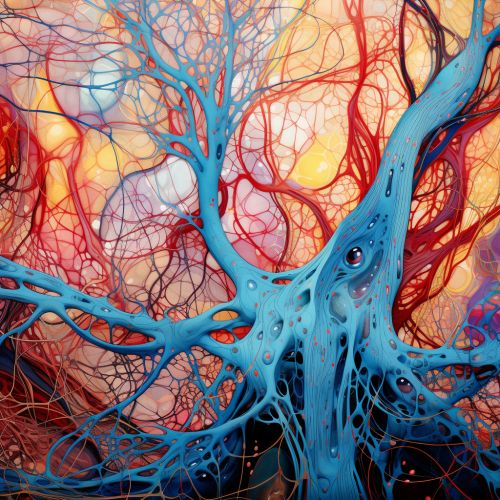Somatic Nervous System
Overview
The somatic nervous system (SNS) is a component of the peripheral nervous system associated with the voluntary control of body movements through the action of skeletal muscles, and the reception of external stimuli, which helps keep the body in touch with its surroundings. It is traditionally considered a part of the peripheral nervous system.
Anatomy
The somatic nervous system includes two major types of neurons: motor neurons and sensory neurons. Sensory neurons, also known as afferent neurons, carry information from the body's sensory receptors in the skin, muscles, and joints to the central nervous system. Motor neurons, also known as efferent neurons, carry signals from the central nervous system to the skeletal muscles.


Function
The primary function of the somatic nervous system is to connect the central nervous system to the body's muscles to control voluntary movements. This system also enables sensory information to be sent to the central nervous system. The somatic nervous system is responsible for activities that are under conscious control, such as walking, talking, and writing, as well as reflex actions like the knee-jerk response, which are not under conscious control.
Motor Pathways
The somatic nervous system's motor pathways involve two neurons: the upper motor neuron and the lower motor neuron. The upper motor neuron has its cell body in the motor cortex of the brain and sends its axon down to the brainstem or spinal cord. The lower motor neuron has its cell body in the brainstem or spinal cord and sends its axon out to the muscle.
Sensory Pathways
Sensory pathways in the somatic nervous system carry information from the body's sensory receptors to the central nervous system. These pathways typically involve three neurons: the primary, secondary, and tertiary sensory neurons. The primary sensory neuron has its cell body in the dorsal root ganglion and sends its axon to the sensory receptor in the skin, muscle, or joint. The secondary sensory neuron has its cell body in the spinal cord or brainstem and sends its axon to the thalamus. The tertiary sensory neuron has its cell body in the thalamus and sends its axon to the sensory cortex of the brain.
Disorders
Disorders of the somatic nervous system can result in motor or sensory deficits. Motor deficits can include weakness or paralysis, while sensory deficits can include numbness or paresthesia. Common disorders of the somatic nervous system include amyotrophic lateral sclerosis, Guillain-Barre syndrome, and peripheral neuropathy.
